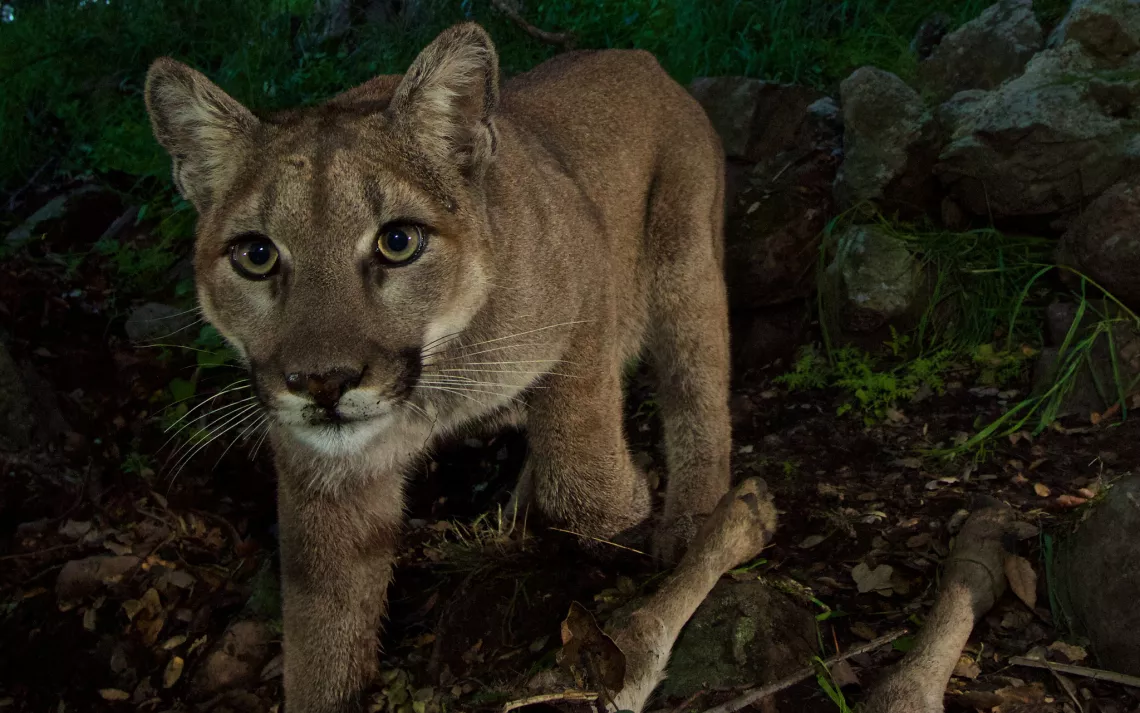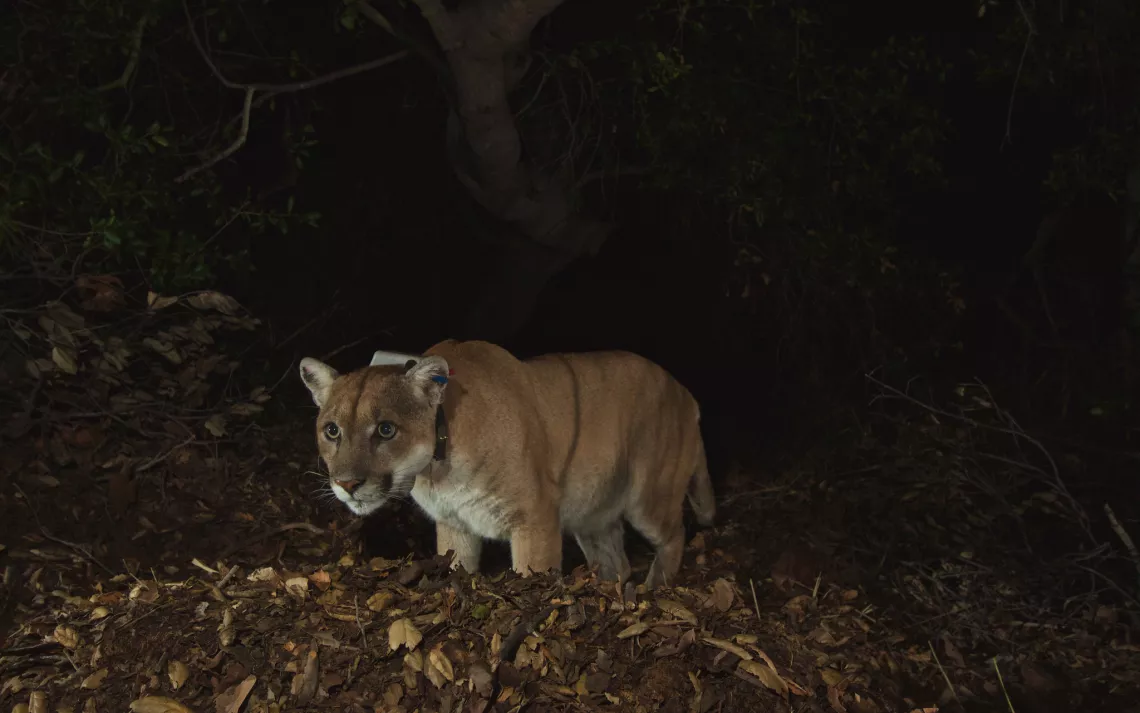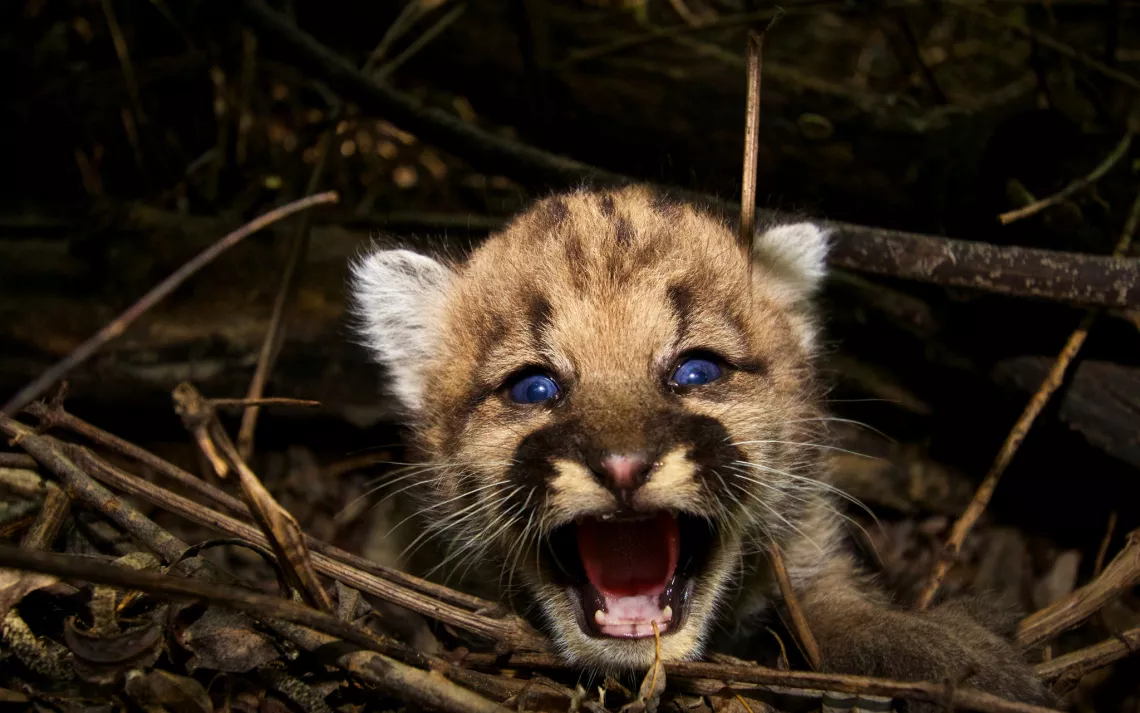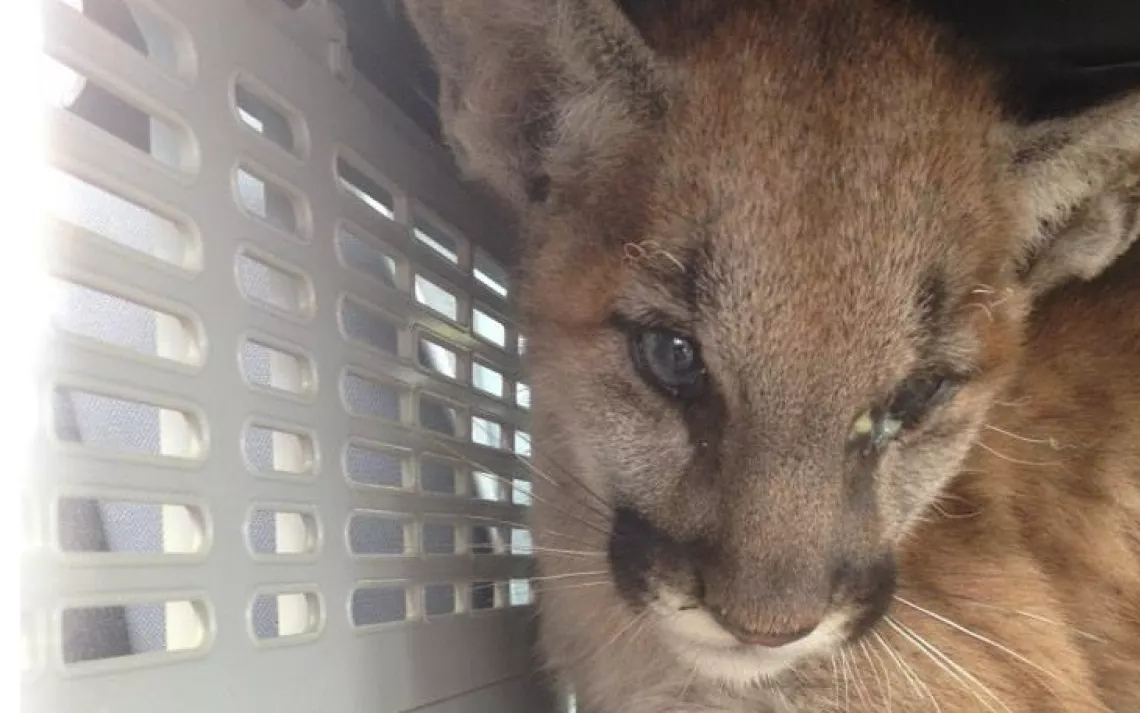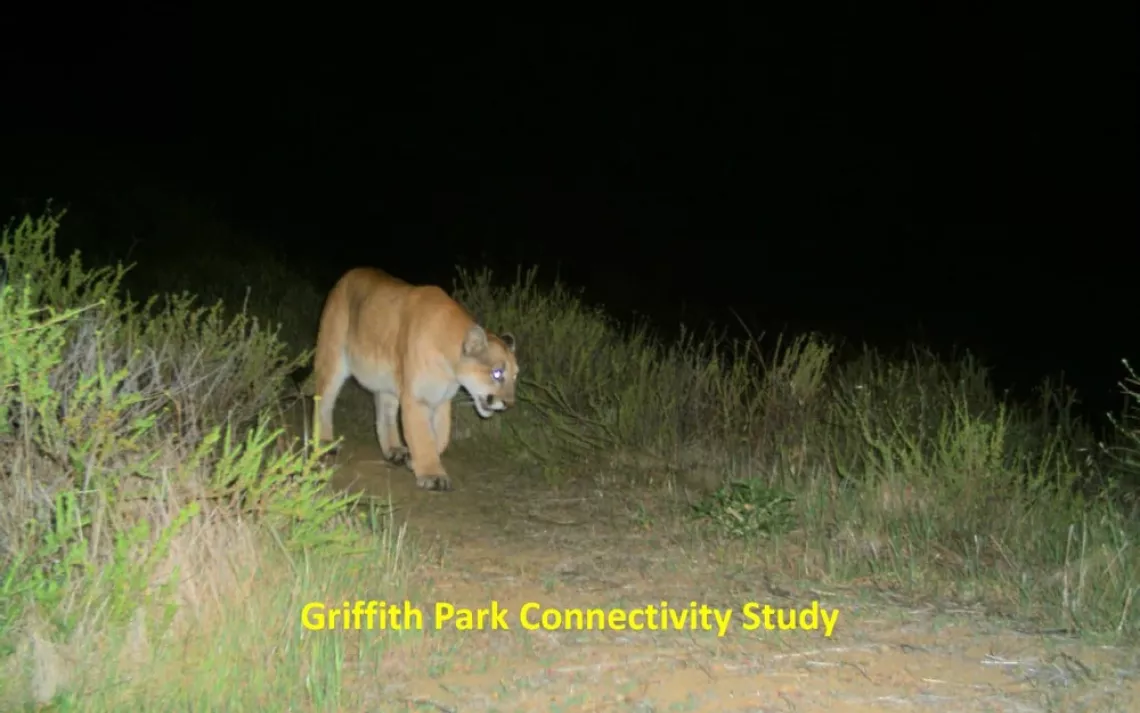Cats in a Cage
L.A.’s infamous traffic isn’t just hard on drivers; it takes a huge toll on wildlife, especially the region’s struggling cougar populations. Urban encroachment and suburban sprawl have funneled the large cats into a genetic bottleneck, especially in the Santa Monica Mountains, where a small group is hemmed in by an eight-lane freeway and the Pacific Ocean. Their survival hinges on access to the open spaces surrounding the gridlocked mountain range.
L.A.’s regional public lands agency—the Mountains Recreation and Conservation Authority—plans to address the problem by building the world’s largest wildlife crossing over Highway 101, a stretch of black-top that has been lethal to wildlife since its construction. The successful completion of the 200 foot-long and 165 foot-wide corridor (known as the Liberty Canyon Road wildlife crossing), would allow Santa Monica’s inbred cougars to disperse to larger public lands to the north and northern cougars to move south to diversify the genetic pool.
As of early September, researchers knew of only six mountain lions living in the Santa Monica Mountains, but two of those have since been killed—one by rat poisoning and the second by another animal. With only four known lions left, the population’s future is tenuous.
“The Santa Monica Mountains are not big enough for a viable population,” says the National Park Service’s Kate Kuykendall. “The area can only successfully support 10 lions. For long-term viability…we need to improve connectivity.”
In 2012 a young male cougar, dubbed P-22, gained celebrity status when he managed to cross two major freeways and make his way from the Santa Monica Mountains along the coast to L.A.’s Griffith Park. “It’s both good and bad. The good news is that P-22 escaped from larger more dominant males— so he survived— but in terms of breeding opportunities, he doesn’t seem to have any,” says Kuykendall. The famous cat is now isolated in a small eight-square-mile island of habitat.
National Wildlife Federation’s Elizabeth Pratt was quick to take advantage of America’s love-affair with bachelors and enlist P-22 as the poster child for the campaign to build a crossing. “P-22’s story is so successful because it resonates with everyone,” she says. “Who hasn’t been caught dateless on a Friday night because of traffic?” In a video for the campaign (watch it below), a cardboard cut-out of P-22 rides merry-go-rounds, floats on a blow-up raft, and cruises around in a drop-top.
If everything goes according to plan, builders will break ground in 2018. According to Kuykendell, the biggest obstacle to the project’s completion is securing funding. There’s a $30 million estimated price tag on the bridge over the 101, and if it were extended over an adjacent road, it would cost $57 million. The campaign has found its legs thanks to a million dollar seed grant from the California State Coastal Conservancy, and has raised $1.2 million to date.
Conservationists hope the completion of the wildlife crossing will pave the way for similar solutions elsewhere. In an increasingly fragmented landscape, the need to bridge the growing gap between wild spaces is paramount. “Building the Liberty Canyon crossing would be a huge statement for conservation,” says Kuykendell. “It would occur on a larger scale and complexity than any other wildlife crossing being built.”
Watch the #SaveLACougars campaign video:
 The Magazine of The Sierra Club
The Magazine of The Sierra Club
